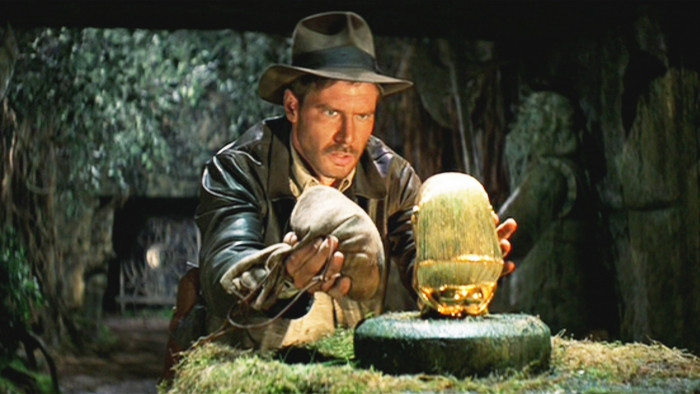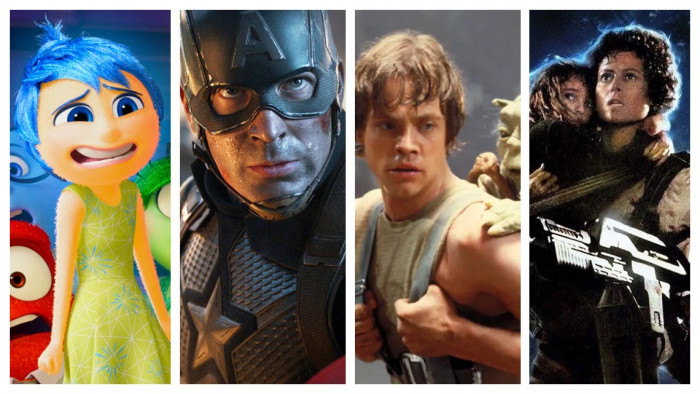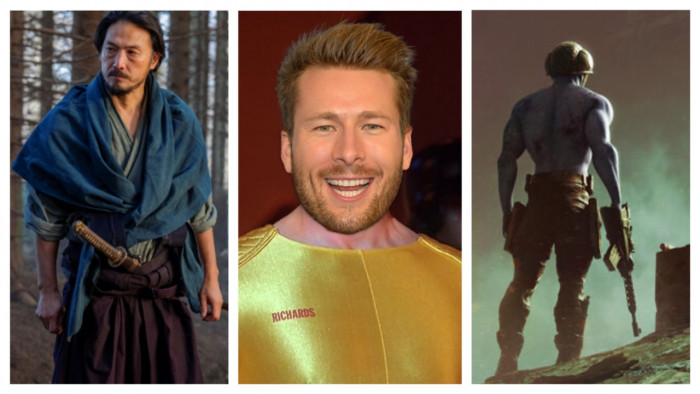For me, Robert Redford is a lot like Shaquille O’Neal,” says JC Chandor, director of Robert Redford’s new film All Is Lost and, as such, a man who should realise that to the casual observer, Robert Redford is absolutely nothing like Shaquille O’Neal.
“Shaquille O’Neal is 7ft 2in and 370lb,” Chandor continues, not exactly strengthening his argument. “Even if this guy didn’t like basketball, he’d have been an idiot not to play it, right? It’s the same with Bob [Redford]: in his twenties, he wanted to be a painter, but I think the first time he stepped on stage and saw people’s reaction to him – his face, his voice, everything – he must have realised, ‘I’ve got to be a movie star.’”
In the next room at the Four Seasons hotel, Paris, ‘Bob’ – the painter-turned-movie star, the Shaquille O’Neal of modern cinema – is waiting to speak to me. Even now, aged 77 and dressed in the kind of comfortable, beige outfit that’s the empirical opposite of the Sundance Kid’s cowboy hats and hobnail boots, every inch of him still suggests a man who belongs firmly on the big screen. His eyes twinkle when he grins. His hair is the exact same colour as his face, giving the vague impression that he’s been hewn entirely from sandstone.
We shake hands, and, with Chandor’s theory in mind, I ask him whether being a ‘movie star’ was always part of the plan. He shakes his head: “I’ve never thought that way. I only ever think from one project to the next. ‘Is this is a good project? Is this a good character?’ My whole career, I never once considered the outcome.”
WASHED OVERBOARD
All Is Lost, as you will discover when you see it (and you really should see it), is a very good project featuring a very good character. The tale of an amateur sailor stranded increasingly hopelessly in the middle of the Indian Ocean, it features roughly 30 seconds of dialogue, and only one human face (Redford’s), but still manages to hold your undivided attention throughout in a way wise-cracking ensemble blockbusters can only dream.
“It’s sort of existential,” says Redford. “It’s the idea that everything around you is being destroyed, and you have to decide, ‘What am I going to do?’ All you can do is try to survive.”
It wasn’t just Redford’s character who was trying to survive; the man himself was at constant risk of being choppered to A&E, due to a dogged insistence on doing all his own stunts. He even plastered his office with pictures of himself, battered and bruised after each day’s shooting, as “proof I’d actually done it”.
“My ego kicked in,” he chuckles. “I’ve always thought doing your own stunts makes you a more complete actor, but at this point in my life, it was very tough. I was always wet, shoes full of water, being washed overboard.
I was getting knocked around all day, so I’d come home every night and…” He raises an invisible beaker to his lips – presumably filled with some form of expensive invisible liquor – and glugs noisily.
This level of dedication goes some way to explaining Redford’s lasting appeal. He’s one of the biggest film stars on the planet, and yet, at an age when his activities should probably be restricted to resting comfortably on his laurels and travelling for free on public transport, he’s still getting “knocked around” on indie films with shoestring budgets.
PRANKS AND PORSCHES
A hard-headed tendency to plot his own course is no new trait for Redford. He has, he tells me, always had “that outlaw sensibility”. Even on the film that transformed him from handsome newcomer to household name – 1969 masterpiece Butch Cassidy And The Sundance Kid – he was stubbornly grafting for perfection, adamantly refusing to fall into line.
“Butch was the most fun I’ve ever had,” he recalls. “But the studio didn’t want me at first, so I had to work for it. Paul [Newman] was a well-known celebrity and I was just a theatre actor; they wanted an equal star. The director liked me, but for the part of Butch, because Paul was supposed to play Sundance. At that time, Paul was known for playing those kind of quiet characters, but that wasn’t him in real life. He was this nervy, talky guy.”
Redford breaks off to act this out. He slumps into his chair and gnaws at his thumbnails, his eyes pin-balling off every corner of the room. “He was like that, you know? So, I said to [the director], I’d love to do it, but the Sundance character interests me more because I grew up with that same outsider, anti-establishment thing.”
Director George Roy Hill promptly switched the roles, and an iconic film – and an enduring friendship – was born.
“Paul and I were constantly playing jokes on each other,” says Redford. “Some pretty severe. I remember, during Butch, I let him borrow my racing car, and suddenly he’s completely taken with motor racing, boring me to death about cars all the time. So, on his 50th birthday, I got hold of this wrecked Porsche.
I wrapped a ribbon around it and had it delivered to his house. No reaction. He doesn’t respond. Two weeks later, I come home and there’s a box in my foyer. Took me an hour to crowbar it open – it’s a big block of metal.
Paul had melted the car down and sent it back to me. So, I get that block turned into the most unbelievably ugly garden sculpture, and send it back to him. All this time, we never spoke about it. That’s the kind of friendship we had.”
That friendship also yielded another oft-quoted classic in the form of 1973’s The Sting. His Oscar-nominated turn as plucky conman Johnny Hooker is arguably Redford’s finest hour. Not that he’d know, of course.
“I didn’t actually see The Sting until a couple of years ago,” he tells me. “My grandson and I were looking for a movie to watch one Christmas, and he pulled out The Sting and says, ‘I guess you’re tired of this one, huh?’ I said, ‘You know, I’ve never seen it.’ I was out of the country when it was released, and when I got back it had played out in theatres. We put it on, and I thought, ‘Wow, this really is a good movie!’”
OUTLAW MENTALITY
I’m eager to return to the idea of this “outlaw mentality” Redford claims he’s always had. Where did the “anti-establishment, outsider thing” first come from, I ask? He squints hard in thought, before finally shaking his head.
“I don’t know,” he says. “Honest to God, I don’t. I just felt like that right from the beginning. In school, I was in trouble a lot. When I was 14, I wanted to see the world but I couldn’t because, y’know, I was 14. Growing up, my only outlet was sports, I was good at sports, but after the Second World War, we were given all these slogans.
The slogan our coach would tell us was ‘It doesn’t matter whether you win or lose; it’s about how you play’.
Through sports, I discovered that was a lie. I saw how important winning was in America. I began to see that my country was different from what I’d been told. Then, at 18, I went to college for a year before I was asked to leave.”
Why? “I just didn’t go to class,” he says, grinning. “I squandered my time. I wanted to be in the mountains, climbing, skiing. I realised my education was supposed to be out in the world. So, I worked for five months in an oil field, and then I was gone.”
His ultimate destination turned out to be Los Angeles; a city that Redford has seen turned on its head since he first rocked up as a teenager with nothing but a handful of oil-stained dollar bills.
“When I entered the business, Hollywood would make big-budget, high-entertainment movies, but they’d also make smaller, riskier ones, such as Dog Day Afternoon,” he says.
“Then, suddenly, things changed. Cable TV and video emerged, the youth market increased. Since Hollywood is just a business, and businesses follow the money, studios began catering for the youth market by making Superman and Batman movies instead of those smaller ones. That’s why I started Sundance [Film Festival], because I could see that breach occurring, and I thought that if this continued, these smaller films just won’t get made.”
The Sundance Festival, which has been held annually in Utah since Redford founded it in 1978, has done more than just repair that breach; it’s breathed new life into independent cinema, and provided a launch pad for some of the best films in recent memory. Without it, we’d have no Reservoir Dogs, Clerks or Sex, Lies And Videotape, to name but three. Have the likes of Quentin Tarantino ever thanked Redford for the platform he gave them? Maybe even offered him a cheeky cameo?
“Tarantino’s never said anything to me,” he laughs. “Steven Soderbergh, Paul Thomas Anderson – none of those guys who came up through Sundance ever asked me to be in their movies. JC [Chandor, whose Margin Call debuted at the festival in 2011] was the first.”
As a respected director himself (1980’s Ordinary People bagged him an Oscar for his work behind the camera), Redford admits he rather enjoyed “putting himself entirely in someone else’s hands” on All Is Lost. I ask if he’s ever found himself in situations similar to the one Chandor creates in the film: namely, staring death in the face with hope fading fast.
“I’ve had a few close calls,” he says. “I’ve been lost in the wilderness on horseback, skied in blizzards so thick you can’t see and you had to get out or you’d freeze to death. In those situations, you have to react like the character in All Is Lost: he understands very well what needs to be done, and he does it the best he can.”
From Butch Cassidy And The Sundance Kid via Sundance Festival right up to All Is Lost, this seems as good a summary of Redford’s career as you’re likely to find.
All Is Lost is at cinemas from 26 December
(Image: All Star)
Latest
Related Reviews and Shortlists


The 10 best war movies of the 21st century









